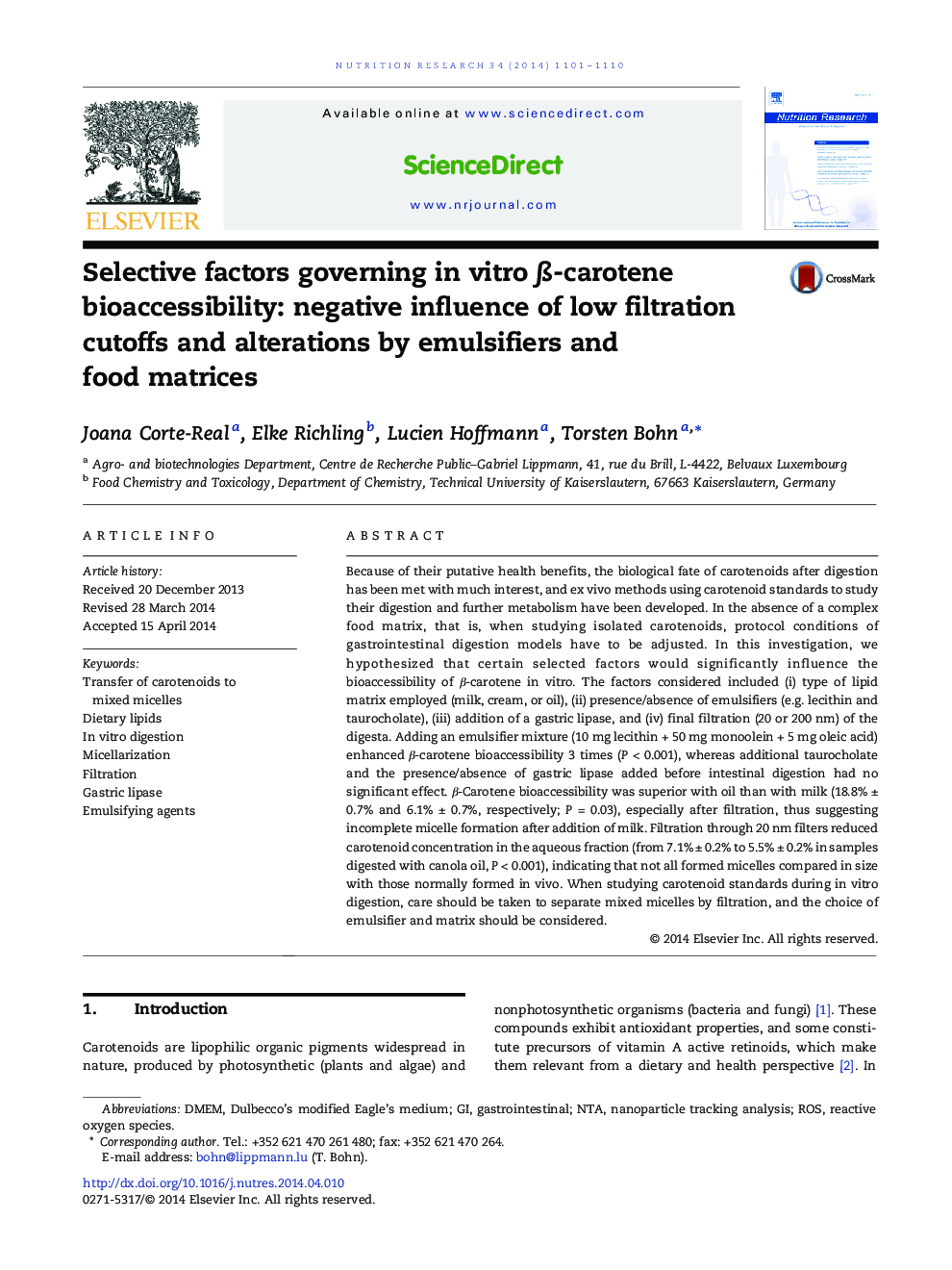| Article ID | Journal | Published Year | Pages | File Type |
|---|---|---|---|---|
| 2808997 | Nutrition Research | 2014 | 10 Pages |
Because of their putative health benefits, the biological fate of carotenoids after digestion has been met with much interest, and ex vivo methods using carotenoid standards to study their digestion and further metabolism have been developed. In the absence of a complex food matrix, that is, when studying isolated carotenoids, protocol conditions of gastrointestinal digestion models have to be adjusted. In this investigation, we hypothesized that certain selected factors would significantly influence the bioaccessibility of β-carotene in vitro. The factors considered included (i) type of lipid matrix employed (milk, cream, or oil), (ii) presence/absence of emulsifiers (e.g. lecithin and taurocholate), (iii) addition of a gastric lipase, and (iv) final filtration (20 or 200 nm) of the digesta. Adding an emulsifier mixture (10 mg lecithin + 50 mg monoolein + 5 mg oleic acid) enhanced β-carotene bioaccessibility 3 times (P < 0.001), whereas additional taurocholate and the presence/absence of gastric lipase added before intestinal digestion had no significant effect. β-Carotene bioaccessibility was superior with oil than with milk (18.8% ± 0.7% and 6.1% ± 0.7%, respectively; P = 0.03), especially after filtration, thus suggesting incomplete micelle formation after addition of milk. Filtration through 20 nm filters reduced carotenoid concentration in the aqueous fraction (from 7.1% ± 0.2% to 5.5% ± 0.2% in samples digested with canola oil, P < 0.001), indicating that not all formed micelles compared in size with those normally formed in vivo. When studying carotenoid standards during in vitro digestion, care should be taken to separate mixed micelles by filtration, and the choice of emulsifier and matrix should be considered.
